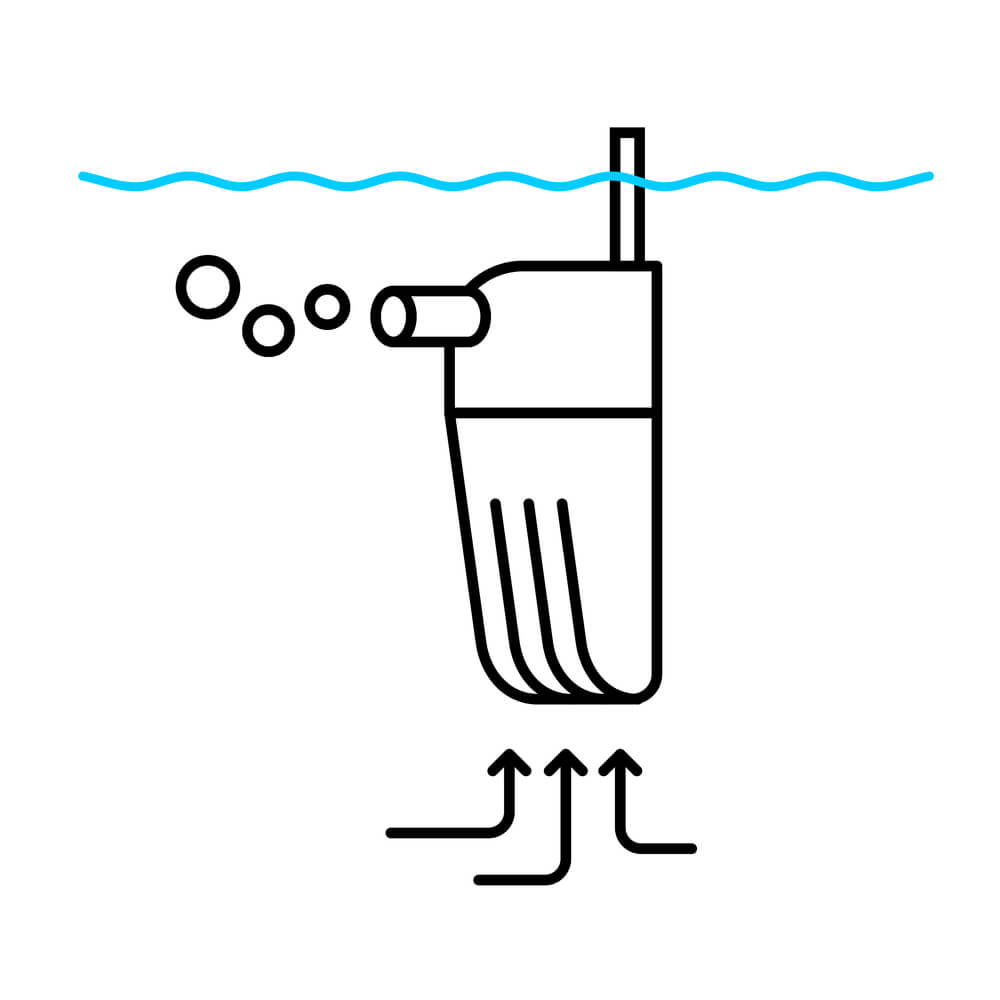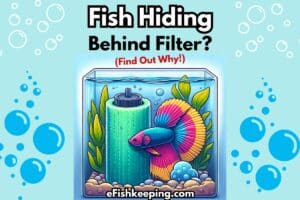Are you annoyed by the loud Whisper filter?
A properly functioning filter not only helps to keep the water clean and oxygenated, but it also helps to create a peaceful environment for you and your fish.
Don’t let a loud filter ruin the tranquility of your fish tank.
Find out why your Whisper filter is so loud and what you can do about it in this helpful post.
We’ll explain common causes and offer troubleshooting tips to get your filter running smoothly again. So don’t wait; start fixing your loud filter now!
What Causes The Whisper Filter To Become Loud:
Troubleshooting a loud Whisper filter involves identifying the cause of the noise and taking steps to fix it.
Several possible reasons a filter might become loud include a clogged intake tube, a damaged impeller, a misaligned impeller shaft, something stuck inside the impeller, or improper placement of the filter.
By diagnosing the root cause of the problem and taking the appropriate action to fix it, you can restore your filter to its normal, quiet operation.
Let’s take a closer look at the possible causes one by one and their solutions
#1. Clogged Intake Tube
Explanation:
A clogged intake tube can cause a filter to become loud for several reasons.
First, a clogged intake tube can restrict the flow of water through the filter, which can cause the impeller (the part of the filter that moves the water) to work harder and make more noise.
When the impeller works harder to move the water, it can create a louder, more straining sound. In addition to making more noise, a clogged intake tube can reduce the filter’s efficiency.
When the intake tube is clogged, it can prevent the filter from drawing in enough water to clean and oxygenate the tank properly. This can lead to a buildup of toxins and excess nutrients in the water, which can be harmful to your fish.
Solution:
If your filter’s intake tube is clogged, you can try the following steps to fix it:
- Turn off the filter: Before cleaning the intake tube, make sure to turn off the filter to avoid accidents.
- Inspect the intake tube: Look for any visible blockages in the intake tube, such as debris, algae, or other foreign objects.
- Use a small, soft-bristled cleaning brush to remove the clog: Gently use the brush to loosen and remove any debris blocking water flow through the intake tube.
- Rinse the intake tube: After removing the clog, rinse the intake tube thoroughly with clean water to ensure that any remaining debris is washed away.
- Reassemble the filter: Once the intake tube is clean, reassemble the filter according to the manufacturer’s instructions.
- Turn the filter back on: Once you’ve reassembled it, turn it back to see if the clog has been cleared. If the filter is still making noise or the water flow is still restricted, you may need to try additional troubleshooting steps.
#2. Problematic Impeller
Explanation:
The impeller is a key component of a filter responsible for moving the water through the filter and back into the fish tank.
It is typically located inside the motor housing of the filter and consists of a series of blades that rotate to create a water flow.
The filter should function quietly and efficiently when the impeller is functioning properly.
However, if the impeller becomes damaged or misaligned, it can cause the filter to become loud.
A damaged impeller can create a loud grinding noise, while a misaligned impeller shaft can cause the filter to vibrate and make a noise.
If the impeller is damaged or misaligned, it can also reduce the filter’s efficiency and may not be able to clean the water properly.
Solution:
To fix a loud filter caused by a damaged or misaligned impeller, you may need to replace the impeller or realign the impeller shaft.
Sometimes, the shaft can also worn out due to continuous usage as explained in the following aquarium filter rattle fixing video.
You can find replacement parts for your filter on online sites like Amazon.
It’s also a good idea to regularly inspect the impeller and impeller shaft for signs of damage or misalignment, as this can help to prevent future issues from occurring.
#3. The Impeller Is Clogged With Sand
Explanation:
Another potential issue with the impeller in a filter is the presence of sand in the fish tank. Problems with the impeller mean the filter won’t function properly and quietly.
If the aquarium contains sand, the Whisper Filters may not function properly. This is because the sand can get inside the magnetic impeller assembly and other internal components of the filter, obstructing the movement of the impeller.

Solution:
To remove sand from the impeller and other internal parts of the filter, turn off the filter and disassemble it. Then, use a soft-bristled cleaning brush to remove any stuck-out sand from the internal parts.
After removing the sand, rinse the impeller and other internal parts thoroughly with clean water to ensure that any remaining sand is washed away, and then assemble everything again.
Moreover, to prevent this problem from occurring, consider replacing the sand substrate with gravel. Gravel is generally preferable because it is less prone to cause issues with the filter.
Alternatively, you could use a mesh net to cover the strainer on the filter. This will allow the filter to continue removing waste from the water, preventing the sand from being drawn into the filter and clogging the internal parts.
#4. Filter Placement Issue
Explanation:
A filter can make a noise if it touches the wall of the fish tank. If the filter is not secured properly or positioned too close to the wall of the tank, it can vibrate against the wall and create noise. This can be particularly problematic if the filter makes contact with the wall at a high flow rate.
Solution:
To fix this problem, consider repositioning the filter away from the wall of the tank or securing it more firmly to the tank. In addition, you can use a filter mounting bracket or suction cups to hold the filter in place.
Alternatively, add a foam pad, sponge, or some other type of cushioning material between the filter and the wall to reduce the noise.
Recommended Read: Fluval 407 Canister Filter Review
Wrapping Up
A properly functioning Whisper filter should operate quietly, with little or no noise. In addition, the filter should create a gentle water flow without any loud or jarring sounds.
If your Whisper filter is making a lot of noise, it may be a sign that something is not working correctly and that the filter needs to be repaired or replaced.
In short, a loud Whisper filter can be caused by various issues, ranging from a clogged intake tube or damaged impeller, clogged impeller, to incorrect filter placement.
By following the tips outlined in this post, you should be able to identify the root cause of the problem and take the appropriate action to fix it.
Maintaining a properly functioning filter is crucial for the health of your fish, so it’s worth the effort to troubleshoot any issues you might be experiencing.
Finally, If you have tried all the other troubleshooting steps and your filter is still making noise, consider purchasing a new filter. This is especially true if you have been using the filter for a long time and have had difficulty identifying the cause of the noise or finding a solution.
Hi! I’m Praveen Ghoshal, the founder of eFishkeeping.com. Inspired by my Dad, I got interested in fishkeeping when I was a kid. Since then, I have been involved with this hobby. Currently, I have 3 fish tanks at our home, and I enjoy this hobby with my full family. Read more about me here.







